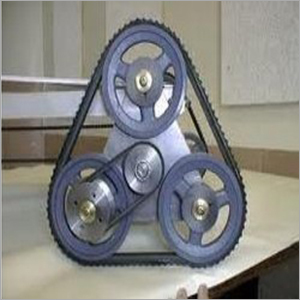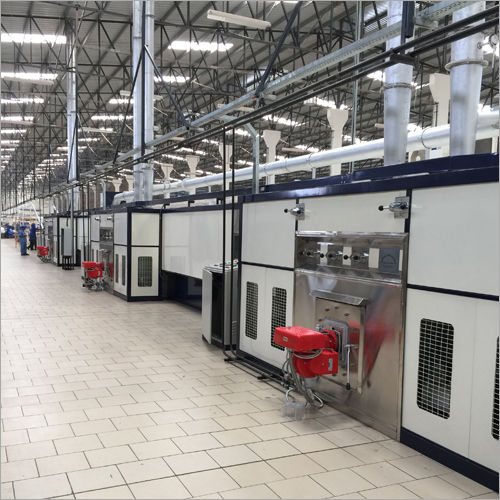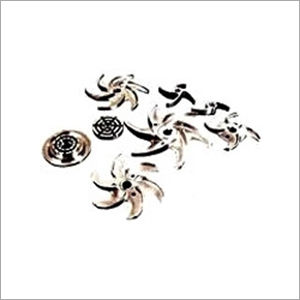
Mechanical Pulleys
4000000 INR/Piece
Product Details:
- Material Stainless Steel
- Power Source Manual
- Automatic Grade Fully Automatic
- Color Grey
- Warranty 1 Year
- Click to view more
X
Mechanical Pulley Price and Quantity
- 1 Piece
- 4000000 INR/Piece
Mechanical Pulley Specification
- Fully Automatic
- 1 Year
- Stainless Steel
- Grey
- Manual
Mechanical Pulleys Trade Information
- 2 -3 Piece Per Month
- 2 Months
Product Description
Mechanical Pulleys designed by us, are a wheel with a flexible rope, cord, cable, chain, or belt on its rim in mechanics. Pulleys are used to transport energy and motion, either alone or in combination. These pulleys are manufactured by making use of premium-grade raw materials and are safe to use. These products may appear basic, but they may give a significant mechanical advantage that makes lifting duties much easier. These pulleys are available at nominal pricing, by our valued customers, in bulk quantities.
Uses of Mechanical Pulley:
1. Lifting Heavy Loads: One of the primary applications of pulleys is to lift heavy objects with less effort. By using a combination of fixed and movable pulleys in a system known as a block and tackle, people can significantly reduce the force required to lift heavy objects like construction materials, engines, or other equipment.
2. Hoisting Systems: Pulleys are often used in hoisting systems for raising and lowering objects. For example, in construction sites, theaters, or warehouses, pulleys are incorporated into systems for moving stage equipment, lifting building materials, or managing cargo in shipping yards.
3. Well and Bucket Systems: In older times, pulleys were used in well and bucket systems to draw water from wells. By attaching a rope and bucket to a pulley, individuals could raise water from deep wells more easily.
4. Elevators: Modern elevators use pulley systems to lift and lower the elevator car. This is particularly true for traction elevators, where the car is connected to a counterweight through a series of pulleys and cables.
5. Exercise Machines: Pulley systems are commonly found in exercise machines and gym equipment. They allow users to adjust the resistance or weight they are working against, making it possible to target different muscle groups effectively.
6. Cranes: Pulleys play a vital role in the operation of cranes, helping to lift and move heavy objects in construction sites, shipping ports, and other industrial settings.
7. Flagpoles: In some instances, flagpoles utilize pulley systems to raise and lower flags. This makes it easier to hoist larger and heavier flags, especially on tall poles.
8. Window Blinds and Curtains: Pulleys are used in window blinds and curtain systems to allow for easy opening and closing of blinds or curtains.
9. Mechanical Advantage Demonstrations: Pulleys are often used in educational settings to demonstrate the concept of mechanical advantage and how simple machines can help multiply or change the direction of force.
10. Garage Doors: Many garage door systems incorporate pulleys to facilitate the opening and closing of the door panels.
11. Sailing and Rigging: Sailboats and ships use various pulley systems, known as blocks, to adjust the tension in rigging lines and control the positioning of sails.
12. Industrial Machinery: Pulleys are used in various industrial machinery and equipment for tasks like material handling, conveyor systems, and manufacturing processes.
FAQ:
1. What is a mechanical pulley?
Ans: A mechanical pulley is a simple machine consisting of a wheel with a groove along its edge, designed to hold a rope, cable, or belt. It is used to transmit force and motion, making it easier to lift heavy loads or change the direction of forces.
2. How does a pulley work?
Ans: A pulley works by distributing the force applied to it across the rope or belt it holds. When force is applied to one end of the rope, it creates tension, causing the pulley to rotate. The mechanical advantage of a pulley system allows for the reduction of the force needed to lift or move a load.
3. What is mechanical advantage in a pulley system?
Ans: Mechanical advantage refers to the amplification of force achieved by using a pulley system. It's determined by the number of sections of rope supporting the load. More sections of rope result in a higher mechanical advantage, requiring less force to lift the load, but the trade-off is that the rope needs to be pulled a greater distance.
4. What are the types of pulleys?
Ans: There are three main types of pulleys: fixed, movable, and compound pulleys. Fixed pulleys are attached to a stationary point and change the direction of force. Movable pulleys are attached to the load and move with it, offering mechanical advantage. Compound pulleys combine fixed and movable pulleys to increase both lifting capacity and mechanical advantage.
5. Where are pulleys used?
Ans: Pulleys are used in various applications, including construction (cranes), transportation (elevators), exercise equipment, theater rigging, well systems, sailing (sailboats), and more. They're employed whenever there's a need to lift heavy loads, change the direction of forces, or reduce the amount of force required for a task.
6. Can a single pulley provide mechanical advantage?
Ans: A single pulley doesn't provide mechanical advantage by itself. It changes the direction of force but doesn't reduce the force required. However, when combined with other pulleys in a block and tackle system, mechanical advantage is achieved.
7. What is a block and tackle system?
Ans: A block and tackle is a system that combines multiple pulleys to achieve mechanical advantage. It consists of a fixed pulley (attached to a stationary point) and a movable pulley (attached to the load). The rope passes through the pulleys in a way that distributes the load's weight across multiple sections of rope, reducing the force needed to lift the load.
8. Can pulleys only lift loads?
Ans: Pulleys can be used for both lifting and pulling tasks. They can change the direction of forces, making it possible to move loads horizontally or at different angles.
9. Are pulleys used in modern technology?
Ans: Yes, pulleys are still widely used in modern technology. They're present in elevators, exercise machines, construction equipment, manufacturing machinery, and more. While technology has introduced advanced alternatives in some cases, the fundamental principles of pulleys remain relevant.
10. How do you calculate mechanical advantage in a pulley system?
Ans: To calculate the mechanical advantage in a pulley system, count the number of sections of rope supporting the load. Each supporting section contributes to the mechanical advantage. For example, a system with two supporting sections of rope has a mechanical advantage of 2.
Tell us about your requirement

Price:
Quantity
Select Unit
- 50
- 100
- 200
- 250
- 500
- 1000+
Additional detail
Mobile number
Email
Other Products in 'Biscuit Making Machine' category
 |
ESSPEE ENGINEERS
All Rights Reserved.(Terms of Use) Developed and Managed by Infocom Network Private Limited. |












